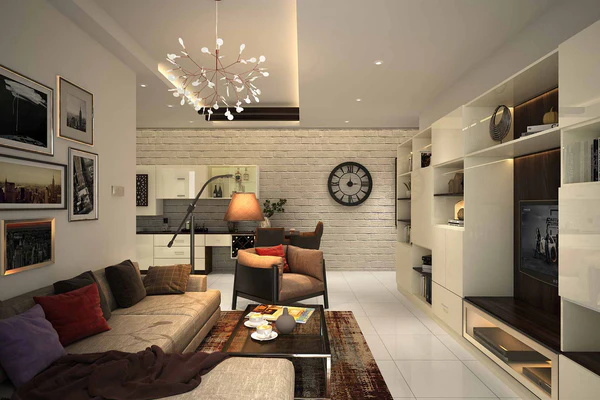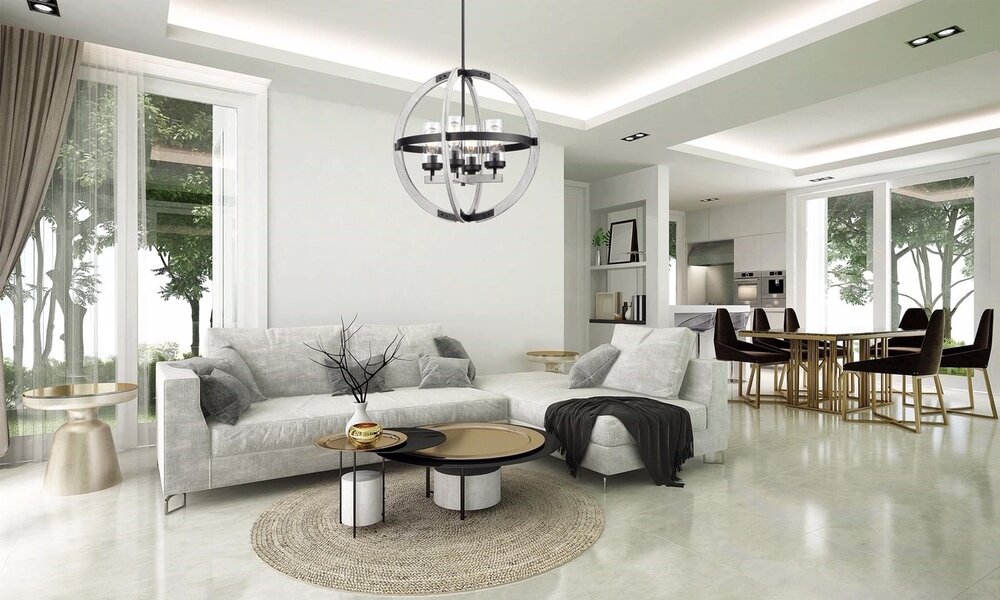Lighting is one of the most crucial aspects of home design, influencing the ambiance, functionality, and overall aesthetic appeal. Whether you’re redecorating or moving into a new space, selecting the right lighting fixtures can transform your home. This guide will walk you through how to choose the perfect lighting fixtures for your home, focusing on both style and practicality.
Understanding the Basics of Lighting
Before diving into specific types of fixtures, it’s essential to understand the three basic types of lighting: ambient, task, and accent lighting.
- Ambient Lighting: This is the general lighting of a room, providing overall illumination. It usually comes from ceiling fixtures like chandeliers, recessed lights, or large pendant lights.
- Task Lighting: This type of lighting is more focused and is used in areas where specific activities like reading, cooking, or working take place. Examples include desk lamps, under-cabinet lights, and pendant lights over a kitchen island.
- Accent Lighting: Accent lighting is used to highlight specific features in your home, such as artwork, architectural details, or plants. Wall sconces, track lighting, and spotlights are common examples.
Understanding these three types of lighting will help you plan the layers of light needed in each room, ensuring both functionality and visual appeal.
Matching Lighting Fixtures to Your Home’s Style
When choosing lighting fixtures, it’s important to consider the overall style of your home. The fixtures you choose should complement the existing decor rather than clash with it.
- Modern and Minimalist Homes: Opt for sleek, simple fixtures with clean lines and minimal ornamentation. Chrome, black, and white finishes work well in these settings.
- Traditional Homes: Classic fixtures like chandeliers, sconces, and lantern-style lights are ideal. Look for fixtures with brass, bronze, or gold finishes to enhance the traditional aesthetic.
- Rustic or Farmhouse Style: For a more rustic feel, consider fixtures made from natural materials like wood, iron, or glass. Vintage-inspired designs with a warm, earthy finish will blend seamlessly into this style.
- Industrial Spaces: Exposed bulbs, metal finishes, and utilitarian designs are the hallmarks of industrial lighting. Consider pendant lights or metal sconces to bring this look to life.
Matching your lighting fixtures to your home’s style ensures a cohesive look that enhances your interior design.

Consider the Functionality of Each Room
Each room in your home serves a different purpose, and the lighting should reflect that. Here’s a breakdown of what to consider for each space:
- Living Room: The living room is a multifunctional space where you might entertain guests, relax, or watch TV. A combination of ambient lighting (like a chandelier or ceiling lights) and task lighting (such as floor lamps) creates a versatile environment. Accent lighting can be used to highlight artwork or architectural features.
- Kitchen: In the kitchen, task lighting is key. Under-cabinet lights, pendant lights over the island, and a bright overhead light will ensure that all your cooking and prep areas are well-lit.
- Bedroom: Bedrooms require soft, relaxing lighting. Consider a mix of ambient light (such as a central ceiling light) and task lighting (like bedside lamps). Dimmer switches are a great addition, allowing you to adjust the light intensity to suit your mood.
- Bathroom: Bathrooms need bright, even lighting, especially around the mirror. Vanity lights or sconces on either side of the mirror provide the best illumination for grooming tasks. Overhead lights or a small chandelier can add a touch of elegance.
- Dining Room: The dining room is often the place for a statement light fixture. A chandelier or pendant light centered over the dining table creates a focal point and sets the tone for the space.
Energy Efficiency and Bulb Selection
In today’s eco-conscious world, energy efficiency is a crucial factor in choosing lighting fixtures. LED bulbs are the most energy-efficient option, using up to 75% less energy than incandescent bulbs and lasting significantly longer. When selecting fixtures, ensure they are compatible with LED bulbs, or consider integrated LED fixtures.
Additionally, consider the color temperature of the bulbs. Warm white (2700K-3000K) is ideal for living areas and bedrooms, while bright white (3500K-4100K) is better for kitchens and workspaces. Daylight (5000K-6500K) is excellent for reading and detail-oriented tasks.
Conclusion
Choosing the perfect lighting fixtures for your home involves more than just picking what looks good. It requires considering the type of lighting needed for each space, matching the fixtures to your home’s style, and selecting energy-efficient options that offer both form and function. By following these guidelines, you can illuminate your home in a way that’s both practical and visually stunning.


